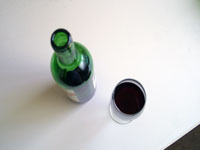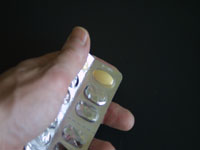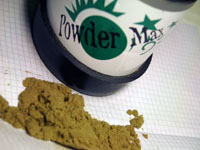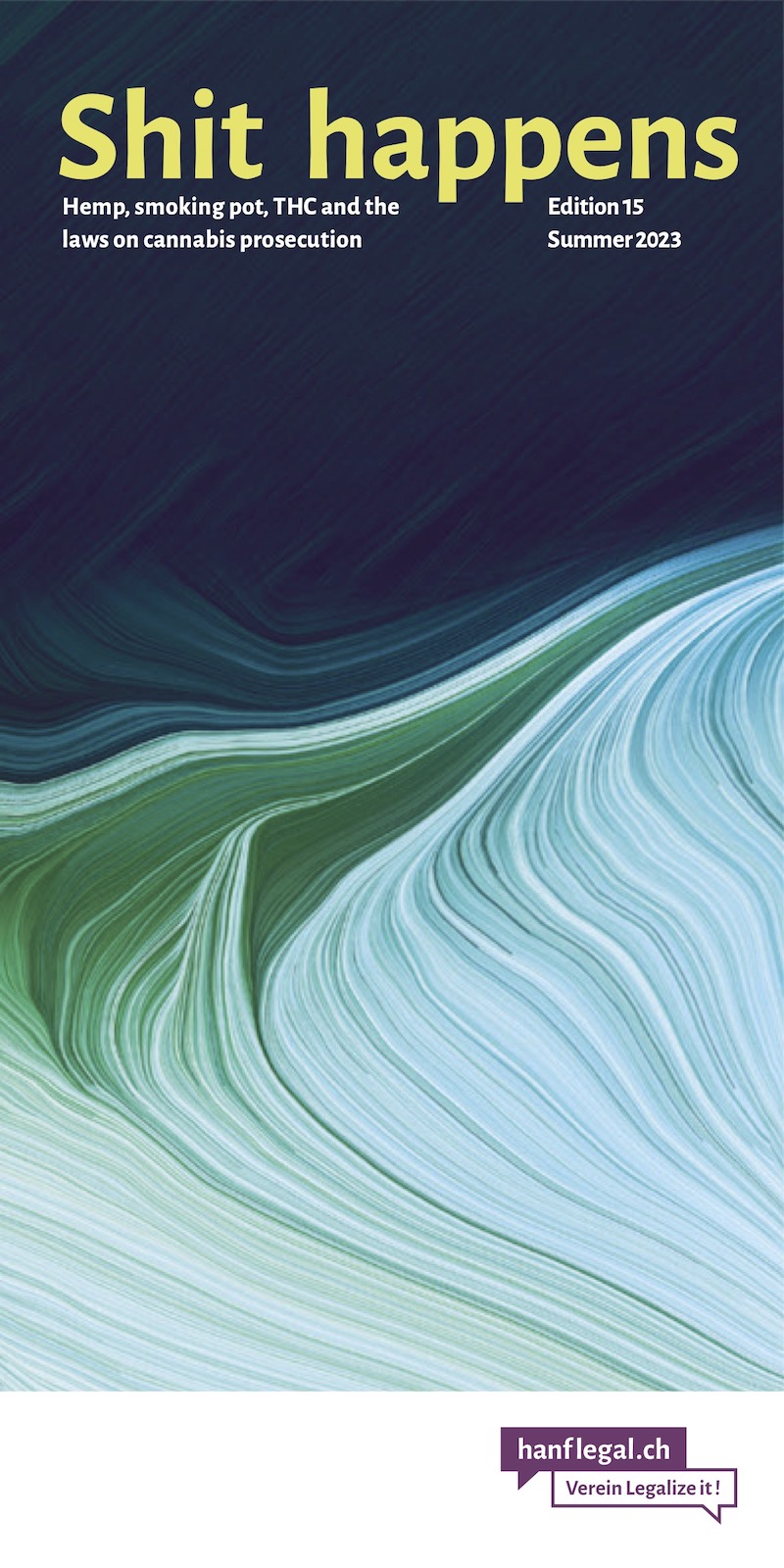- THC & Law:
All psychoactive should be treated equally
Psychoaktiv.ch wants to treat all stimulants equally. Whether legal or illegal - all drugs can be used and abused. So we should legalize the illegal ones and regulate the legal ones more strictly. But maybe just turn the legal ones into illegal ones?
The commission
The Federal Commission on Narcotic Drugs EKDF is a federal commission. It is based on Article 30 of the Narcotics Law and has repeatedly issued reports (including the Cannabis Report of 1999) on its core topic, illicit drugs. The Commission does not want to pick up the pieces left behind by the National Council's No to the proposed revision. No, it wants to think more on a general level and make proposals. Concrete political implementation is not their thing.
The first part
First, the EKDF turns its attention to the past. It believes that psychoactive substances were increasingly consumed in the 1960s and 1970s. In doing so, it completely disregards (contrary to its later pronouncements) that alcohol and tobacco were also widespread stimulants in those times. Of course, it was mainly new drugs that emerged at that time, such as cannabis products. The Commission's opinion that it was the supply that created the demand for such substances can also be doubted with a clear conscience. After all, people consume the various substances because they are good for them. These positive experiences with the various, new substances for most consumers led to a greater supply. After all, the commission admits that people have been consuming psychoactives for thousands of years, thereby “influencing their body and emotional balance.” In doing so, the EKDF recognizes that a society's approach to its drugs has rarely corresponded to their dangerousness. It has never been rational considerations by which psychoactive substances have been judged, but always very ideological justifications why certain substances were and are banned and others allowed. But then the commission makes a bigger blunder when it says that the focus on the hard drug scene in the 1980s led to “de facto tolerance of the use of soft drugs in German-speaking Switzerland”. The statistics on consumption reports prove just the opposite: the number of reports against people smoking pot is also rising sharply in these years. It is true that in the 1990s, hemp was cultivated on a very large scale in Switzerland itself. But then she tells the fairy tale again that extremely high THC contents were produced. The fact is that good weed and good hash have always had high THC contents. The only thing that was new was that Swiss outdoor hash, which was considered to be hay before the boom, became better and better in quality and was soon on a par with imported hash, even surpassing it in taste. Also the opinion of the commission that “only since June 2004 the repression has been intensified again” misses the reality quite a bit. The repression against the stores already began slowly in the mid-1990s and increased enormously after the decision of the Federal Supreme Court in 2000. It varies from canton to canton, but by mid-2004, the vast majority of hemp stores and hemp producers were already deeply involved in harsh prosecutions. Raids, confiscations and pre-trial detention have been the order of the day for years. The Federal Council is strongly criticized for dropping the old proposals of the experts to include all addictive substances in prevention. But the legal alcohol dealers successfully resisted the designation “addictive substance” for their stimulants at the time.
The second part
Now the commission is looking at the current state of knowledge about the various substances. It distinguishes between sedative (alcohol, opiates), stimulant (caffeine, nicotine, cocaine) and hallucinogenic substances (cannabis, LSD). So far, one can follow the EKDF. Especially when it adds that the concrete effects on different people can vary greatly. It is also good that the distinction is made between low-risk use (which is well under control), problematic use (harmful to health, with concrete negative consequences on body, mind and social environment) and dependence (which causes a loss of control in the user, so that they use even though they know it is not good for them). It is also good that she is in favor of a general health promotion, and no longer wants to pick on individual substances, but wants to combat problematic consumption. Then it sounds a bit like the commission is at least of the opinion that the consumption and the preparatory acts could be exempt from punishment. But immediately follows the sentence: “By putting all psychoactive substances on an equal footing, a gain in legitimacy could probably be expected for the prohibition norms of the narcotics legislation. The Commission's aim is to “harmonize and combine repression, self-responsibility and state control”. So more repression after all?
The third part
Finally, the commission comes to the future, and for the first time, on page 54, a concrete positive sentence is made about consumption: “In the future, it must be taken into account that the consumption of a substance also has positive effects for the users. And: Repression should not be directed against users, the EKDF finds, after all. There are nice, good sentences in the report. For example, that the new overarching addiction policy proposed by the commission
proposed by the commission should fundamentally dispense with the distinction between legal and illegal drugs. Instead, it must identify ways to minimize the undesirable consequences of consumption. In other words, individual freedom should no longer be restricted without justification, as was the case with the ban on cannabis use, but only where the restriction is in the overriding interest of society. Thus, for cannabis products, the Commission concludes that the “prohibition of all use unspokenly assumes that there is no low-risk use of this substance at all. The fact that this is wrong has become more and more apparent in the awareness of the population in recent years. Today, experts generally even assume that most users exhibit unproblematic, low-risk patterns of use.”
What remains?
The commission does not make any concrete recommendations. Nor does it consider how majorities could be found for its new policy. Thus, it is to be feared that the positive, liberal approaches will be forgotten, but sentences such as “a ban on production, trade and consumption would also be possible for certain psychoactive substances that are still legal today” will be implemented. This sentence shows where it is likely to go (and what the campaigns against cigarette smoking in the public currently demonstrate as well): It is already going in the direction of equal treatment of legal and illegal substances. But it is not going in the direction of legalizing the illegal, but illegalizing the legal!
www.psychoaktiv.ch
“From the Politics of Illicit Drugs to the Politics of Psychoactive Substances,” May 2005 working version, 81 pages. As of September 2005, the website www.psychoaktiv.ch was launched, and as of November the report is available as a book. The link now (June 2009) leads to the Federal Office of Public Health.
Support our work with a donation:
Bank transfer
Account number (IBAN):
CH02 0900 0000 8709 1354 3
Full account details
Or scan this QR code with your eBanking App (ZKB, Revolut, Postfinance, …):

Or open/share the QR code as PDF file with your eBanking App.
Credit card
Donate via credit card
Verein Legalize it!
Quellenstrasse 25
8005 Zürich
Threema ID 7NH65RBY
Don’t miss anything! Follow us on social media:




